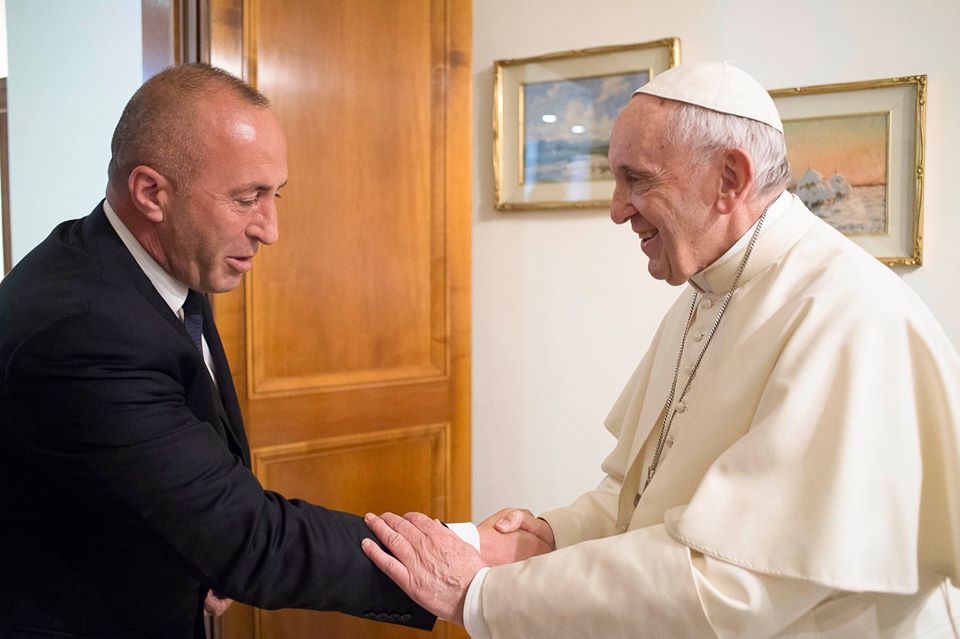
Views: 2670
It is the season for exposures and exposes, and the Catholic Church has been making regular ripples of the wrong and undeniably crude sort. Globally, the church is finding itself being picked bare in terms of institutional malfeasance, not merely on the issue of having harboured abusive priests, but of placing a dark, impenetrable cover over them.
No area of influence has been spared. In Guam, the disruptive efforts of former Archbishop Anthony S. Apuron made it into public eye with G. R. Pafumi’s work citing attempts to invalidate a 2016 statute lifting limitations for child sex abuse. In Pafumi’s grave words, “The Church believes it is never wrong because it has been guided by the Holy Spirit for nearly 2,000 years.”
The Holy Spirit has not being doing much work of late, and seemed to have deserted Adelaide’s Archbishop Philip Wilson last week when he was found guilty of concealing acts of child abuse by a priest. Australia’s media cognoscenti claimed this to be a globally significant move, as it made Wilson the most senior Catholic in the world to be found guilty of such a charge. The legal argument for Wilson had been one of ignorance: he had not known that a priest by the name of James Fletcher had abused a boy back in the 1970s.
Magistrate Robert Stone did not find much to merit that version, rejecting Wilson’s frail memory on a conversation in 1976 in which the then 15-year-old victim described the abuse by Fletcher, who was working in the Maitland/Newcastle diocese in New South Wales.
Would there be immediate effect upon his office? Certainly no resignation, a move deemed arrogant by former NSW police detective chief inspector Peter Fox. The Church, as ever, remains an obstinately self-policing institution at logger heads with secular institutions. Wilson was hoping for a soft landing, a reprieve from “the people of the archdiocese of Adelaide” to whom he urged to “continue to pray for me.” In the meantime, he would continue his “prayers and best wishes” for the faithful in the archdiocese.
There would, at best, be a temporary standing down, but hardly a genuine resignation. Spokeswoman for the archdiocese Jenny Brinkworth seemed to undo the seriousness of the conviction with bureaucratic numbing. “Standing aside doesn’t necessarily mean it’s forever. He’s standing aside until process has run its course.”
Pope Francis has found himself reeling in managing the child abuse crisis, and more specifically the machinery of deception and concealment. For all the claims of his supposedly more progressive streak, he has been traditionally resistant on the Church’s sclerosis in dealing with the culpable management of abusive priests.
Chile has proven to be particularly problematic, a veritable crown of thorns. The Pope had, for instance, gone as far as accusing child abuse victims, notably those associated with the infamous Rev. Fernando Karadima, of calumny. An exchange with a reporter at the gate of the Iquique venue, the site of Mass on the last day of his Chile visit, sent the press and commentators into a spin of dizzied alarm.
Central to the exchange was the pontiff’s 2015 appointment of Bishop Juan Barros. The appointee to the diocese of Osorno had been a Karadima protégé, who survivors say bore witness and covered-up abuses in Chile. In a more moderate tone, the Pope decided to sober up matters on returning to Rome. “You [reporters],” went Francis, “in all good will, tell me that there are victims, but I haven’t seen any, because they haven’t come forward.” This was a far-fetched assertion, given that Barros has been lighting up matters on the abuse trail since 2012.
Since then, victims have been furnishing Chilean prosecutors with a bounty of testimony. Former member of the Pontifical Commission for the Protection of Minors, Marie Collins, was significantly riled, having delivered a letter of 8 pages to the Pope outlining her own accounts of abuse.
Collins’ own resignation from the body was prompted by a seemingly incurable bureaucratic inertia. “The most significant problem,” she penned in her resignation in March 2017, “has been reluctance of some members of the Vatican Curia to implement the recommendations of the Commission despite their approval by the pope.”
In his January 31, 2015 letter to the executive committee of the Chilean bishops’ conference, it became clear that Francis was entirely cognisant of the problems. “Thank you for having openly demonstrated the concern that you have about the appointment of Monsignor Juan Barros. I understand what you are telling me and I’m aware that the situation of the church in Chile is difficult due to the trials you’ve had to undergo.”
Having rounded up on critics of those accused of child abuse, he has been pushed into an act of near grovelling contrition, suggesting last month that there has been “serious errors of assessment and perception”. The question lurking amidst the frocks was who had supplied the supposedly infallible Francis with the unreliable information. He had claimed to have precipitated the errors of assessment “due to lack of truthful and balanced information.” Cardinals Francisco Javier Errázuriz and Ricardo Ezzati, both archbishops of Santiago, have denied being involved in that defective information loop.
By the end of April, the pontiff had met three victims of Karadima in Rome. One of the survivors, Juan Carlos Cruz, claimed that the Pope had sorrowfully relented. “I was part of the problem,” he is reported to have said. “I caused this and I apologize to you.”
The Vatican Curia’s response to the dimension of shuffling, moving and redirecting errant and abusive priests supplies a general, global blue print. Dioceses have duly complied, taking their lead from the top. All in all, responses by the Church have been irregular and often soft. Sabbaticals and exit strategies have been promised to those in the higher realms of the church food chain.
Those constructively guilty of abuse – through denial and administrative dissimulation – are merely moved on. Individuals like Apuron have not been defrocked, nor restrictions placed on his continued ministry. Wilson, despite his conviction, remains defiant. Given the Vatican’s previous form, he has every reason to do so.
Originally published on 2018-05-28
About the author: Dr. Binoy Kampmark was a Commonwealth Scholar at Selwyn College, Cambridge. He lectures at RMIT University, Melbourne. Email: bkampmark@gmail.com
Source: Global Research
Origins of images: Facebook, Twitter, Wikimedia, Wikipedia, Flickr, Google, Imageinjection, Public Domain & Pinterest.
Read our Disclaimer/Legal Statement!
Donate to Support Us
We would like to ask you to consider a small donation to help our team keep working. We accept no advertising and rely only on you, our readers, to keep us digging the truth on history, global politics and international relations.
FOLLOW US ON OUR SOCIAL PLATFORMS










